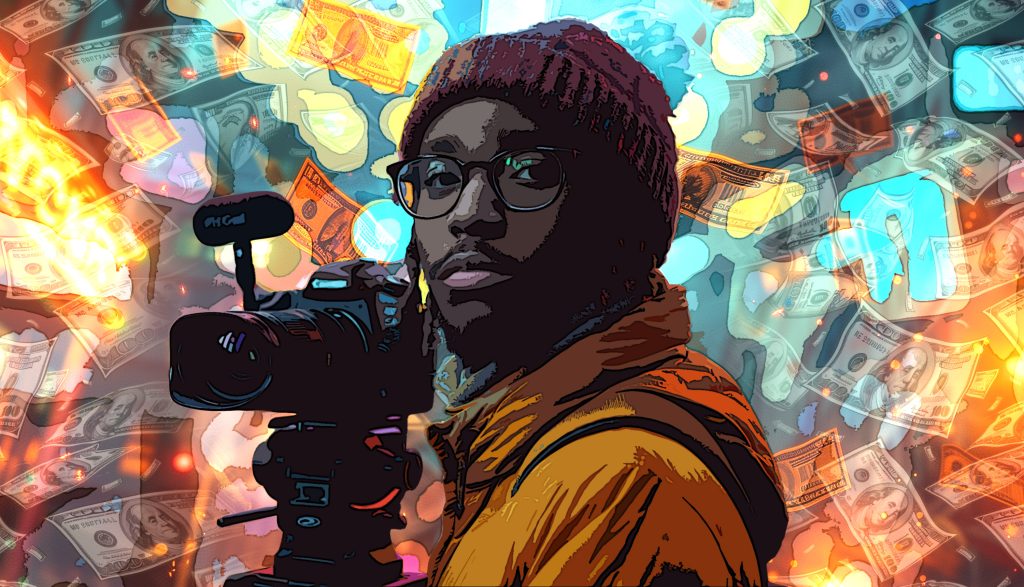
The landscape of creator content platforms has experienced a significant saturation in recent years, leading to a proliferation of platforms where creators can share their content. With the rise of social media, video-sharing sites, podcasts, and other digital channels, individuals have more options than ever to showcase their creativity and engage with audiences worldwide. This proliferation has democratized content creation, allowing anyone with an internet connection to become a creator and share their voice, art, or expertise with the world. However, this abundance of platforms has also resulted in a fragmented audience base, making it challenging for creators to stand out and gain traction in a crowded digital space.
The increased competition for audience attention is a significant challenge faced by creators in the current content landscape. As the number of creators and platforms continues to grow, the attention span of audiences becomes increasingly divided, making it harder for individual creators to capture and retain viewership. Social media algorithms, changing trends, and evolving audience preferences add another layer of complexity to the competition for attention. Creators must constantly innovate, adapt, and find unique ways to engage their audience to stay relevant in a rapidly evolving digital ecosystem.
One of the key challenges facing creators in the saturated content landscape is the issue of monetization and sustainability. While some successful creators can earn a substantial income through sponsorships, brand deals, and advertising revenue, many others struggle to monetize their content effectively. The oversaturation of creator platforms can lead to a dilution of value, making it harder for creators to command fair compensation for their work. Additionally, fluctuating algorithms, changing consumer behaviors, and evolving industry standards pose ongoing challenges for creators looking to establish long-term sustainability in the ever-evolving creator economy. Implementing a more comprehensive metric system and bursting the influencer bubble could potentially benefit creators, brands, and the industry by promoting transparency, accountability, and fair practices.
Changing user preferences and consumption habits have led to a notable shift in user engagement patterns within the creator content landscape. As audiences evolve, their expectations for content diversify, requiring creators to adapt and innovate to maintain relevance and engagement. The influencer marketing bubble, which once seemed unbreakable, is now showing signs of strain, particularly impacting mid-market creators. This shift in user engagement patterns emphasizes the importance of creators understanding their audience’s evolving needs and interests to sustain their presence in the competitive digital landscape.
The impact of algorithm changes on content visibility has been a pivotal factor contributing to the perceived burst of the creator content bubble. Algorithms play a significant role in determining which content reaches audiences, with changes often affecting the organic reach and visibility of posts. These algorithm updates have the power to elevate engaging content while burying less compelling posts, highlighting the need for creators to prioritize audience engagement and interaction to maintain visibility. Additionally, algorithms tend to favor content that sparks conversations and interactions, emphasizing the importance of fostering community engagement and user-generated content to enhance visibility and reach.
In response to changing user preferences and algorithmic challenges, content creators are diversifying their content formats to adapt to evolving audience demands[9]. Content saturation and the perceived oversaturation of certain formats, such as written content, have prompted creators to explore new ways of engaging with their audiences, including: – Video content – Live streaming – Interactive experiences – Augmented reality (AR) and virtual reality (VR) content By embracing diverse content formats, creators can cater to different audience preferences and stand out in a crowded digital landscape, potentially mitigating the effects of a bursting creator content bubble. Ultimately, the ability to innovate and evolve in response to changing user behaviors and algorithmic challenges will be crucial for creators looking to thrive in the dynamic creator economy.
Opportunities for niche content creators are on the rise in the evolving landscape of the creator content industry. While there may be concerns about the sustainability of the creator economy, particularly with the potential oversaturation of mainstream platforms, niche content creators have the opportunity to stand out by catering to specific, engaged audiences. These creators can explore untapped markets, address specialized interests, and build dedicated communities around their unique content. By focusing on niche content, creators can differentiate themselves in a crowded space and potentially find success by providing valuable and specialized content to their target audience.
The evolution of monetization models within the creator content industry is reshaping how creators earn income and engage with their audiences. As the industry matures, creators are exploring diverse revenue streams beyond traditional sponsorships and brand deals. New monetization methods, such as subscription-based services, merchandise sales, exclusive content offerings, and membership programs, allow creators to establish more sustainable income sources and deepen connections with their followers. By diversifying their revenue streams, creators can mitigate the risks associated with fluctuations in advertising budgets and platform algorithms, ensuring greater financial stability in the long run.
Authenticity and engagement have become essential factors in determining the success and longevity of content creators in the current landscape. As the industry moves towards bursting the influencer bubble and implementing more comprehensive metric systems, the emphasis is shifting towards fostering genuine connections with audiences and creating impactful, meaningful content. Creators who prioritize authenticity, transparency, and meaningful engagement with their followers are more likely to build loyal communities, drive organic growth, and maintain relevance in a rapidly changing digital environment. By focusing on quality over quantity and cultivating authentic relationships with their audience, creators can navigate the evolving creator content industry with resilience and sustainability.

Monetizing short videos on social media platforms has become an increasingly popular way for content creators to earn money. Various social media platforms offer opportunities for creators to monetize their content through different methods, including ad revenue sharing, brand partnerships, and viewer donations. Platforms like YouTube, TikTok, and Instagram have introduced features that allow creators to generate income from their short video content. One of the key considerations when looking to monetize short videos is selecting the right platform that aligns with the type of content being created and the target audience.
To qualify for monetization on most platforms, creators often need to meet certain criteria and adhere to specific guidelines. For example, YouTube introduced the Shorts Fund to reward creators making engaging content on YouTube Shorts, a platform dedicated to short-form videos. This initiative aims to incentivize creators to produce high-quality short videos and grow their audience on the platform. Similarly, TikTok offers a Creator Fund that provides monetary rewards to creators based on the performance and engagement of their short video content. Meeting these requirements and utilizing the features offered by the platforms are essential steps towards successfully monetizing short videos.
Several popular platforms stand out as leading choices for creators looking to monetize their short video content. These platforms provide a range of monetization options, including ad revenue sharing, brand deals, subscriptions, and virtual gifts. Some of the top video monetization platforms for 2024 include VPlayed, GudSho, IBM Cloud, Brightcove, and Vimeo OTT. Each platform offers unique features and benefits for creators, allowing them to leverage their creativity and engage with their audience while earning money from their short videos. By exploring these opportunities and understanding the requirements of each platform, creators can tap into the growing trend of monetizing short videos on social media to build a sustainable income stream.
Creating high-quality and engaging content is essential to maximize earnings from short videos on social media. Video content that resonates with viewers, whether through entertainment, education, or emotional connection, is more likely to attract a larger audience and drive engagement. By focusing on producing visually appealing, informative, and entertaining videos, content creators can enhance their chances of monetizing their social media presence. Some key strategies for creating high-quality and engaging video content include: – Investing in good lighting and audio equipment – Using creative editing techniques to enhance visual appeal – Incorporating storytelling elements to captivate viewers – Tailoring content to suit the platform and audience preferences By prioritizing quality and engagement in video creation, creators can increase their viewership and potential for earning revenue through various monetization methods.
Understanding audience preferences and staying informed about current trends are crucial aspects of maximizing earnings from short video content[6]. By analyzing audience demographics, behavior, and feedback, content creators can tailor their content to better meet viewer expectations and interests. Additionally, keeping abreast of trending topics, challenges, and formats can help creators stay relevant and capitalize on viral content opportunities. Some effective strategies for understanding audience preferences and trends include: – Analyzing viewer metrics and engagement data – Conducting audience surveys or polls to gather feedback – Monitoring social media trends and popular content formats – Collaborating with other creators or influencers to tap into new audiences By staying connected with their audience and the evolving social media landscape, content creators can optimize their video content for maximum reach and engagement, ultimately boosting their earning potential.
Leveraging marketing and promotion techniques is essential for content creators looking to maximize their earnings from short videos on social media. While creating high-quality content is crucial, effectively promoting that content to reach a wider audience is equally important for monetization. Some key marketing and promotion strategies for video content creators include: – Collaborating with brands for sponsored content opportunities – Implementing affiliate marketing to promote products or services – Utilizing social media advertising to reach targeted audiences – Engaging with followers through interactive features like live streams, Q&A sessions, or behind-the-scenes content By adopting proactive marketing and promotion strategies, content creators can expand their reach, attract potential monetization opportunities, and ultimately increase their earnings from short videos on social media platforms.

Balancing creativity with productivity is a common challenge faced by content creators in managing themselves effectively. The nature of content creation often requires a delicate balance between allowing creative ideas to flow freely and meeting deadlines or producing content consistently. This balance can be challenging to maintain, as creativity thrives on freedom and exploration, while productivity demands structure and efficiency. Some key points to consider in balancing creativity and productivity include: – Finding a routine that allows for both creative exploration and focused work – Setting clear goals and priorities to guide creative projects – Incorporating breaks and self-care practices to recharge creative energy – Experimenting with different techniques to boost productivity without stifling creativity By navigating the interplay between creativity and productivity, content creators can enhance their self-management skills and optimize their content creation process.
Effective time management is crucial for content creators to navigate the demands of producing content, engaging with their audience, and managing other aspects of their work. Content creation is a multifaceted endeavor that requires juggling various tasks, such as ideation, content production, editing, promotion, and audience interaction. By mastering time management techniques, creators can: – Prioritize tasks based on importance and deadlines – Break down larger projects into manageable steps – Allocate time for creative work, administrative tasks, and self-care – Utilize tools and technology to streamline workflows and track progress By honing their time management skills, content creators can enhance their productivity, reduce stress, and maintain a healthy work-life balance.
Dealing with burnout and creative blocks is another significant challenge that content creators may encounter in managing themselves effectively. Burnout, often characterized by feelings of exhaustion, cynicism, and reduced effectiveness, can impact creators regardless of whether they monetize their content. Creative blocks, periods of reduced inspiration or productivity, can also hinder content creation and lead to frustration. Strategies for coping with burnout and creative blocks include: – Taking breaks to rest and recharge – Seeking inspiration from diverse sources – Engaging in activities unrelated to content creation – Reflecting on personal goals and motivations – Seeking support from peers or mentors By acknowledging and addressing burnout and creative blocks, content creators can nurture their creativity, maintain their well-being, and sustain their passion for content creation.
Setting clear goals and prioritizing tasks are essential strategies for content creators to effectively manage themselves. By establishing specific objectives and deadlines, content creators can focus their efforts on what needs to be accomplished each day. Prioritizing tasks ensures that the most important and time-sensitive work is completed first, allowing for a more organized and productive workflow. Some key points to consider when setting clear goals and prioritizing tasks include: – Utilizing task managers or to-do lists – Breaking down larger projects into smaller, manageable tasks – Allocating time for high-priority assignments These strategies help content creators stay on track and make progress towards their content creation goals, leading to increased efficiency and success in managing their workload.
Establishing a consistent workflow is another crucial aspect of self-management for content creators. A well-defined and documented workflow streamlines the content creation process, making it easier to produce high-quality and engaging content consistently. By creating templates, checklists, and calendar plans, content creators can ensure that their workflow supports their creative endeavors and minimizes unnecessary stress and confusion. Key elements of an effective workflow include: – Developing a content creation workflow from idea to publication – Implementing templates and checklists for repetitive tasks – Planning content creation in advance to maintain predictability and consistency A strategic workflow not only enhances productivity but also helps content creators avoid feeling overwhelmed by their workload, enabling them to maintain a steady output of content.
Practicing self-care and avoiding overwork are vital for content creators to prevent burnout and sustain their creativity. Self-care practices, such as prioritizing rest, setting boundaries, and cultivating healthy habits, play a significant role in maintaining mental and physical well-being while navigating the demands of content creation. By incorporating self-care strategies into their routine, content creators can protect themselves from the negative effects of burnout and sustain their passion for creating content. Key self-care practices that content creators can implement include: – Setting aside time for relaxation and leisure activities – Establishing boundaries between work and personal life – Engaging in regular exercise and healthy eating habits By prioritizing self-care and work-life balance, content creators can nurture their creativity, prevent burnout, and continue producing engaging and high-quality content in the long term.
Self-discipline and focus play a crucial role in the self-management of content creators. While talent and creativity are essential traits for successful content creation, the presence of discipline, systems, and a positive mindset is equally vital. Without cultivating self-discipline and maintaining focus, content creators may struggle to meet deadlines, stay organized, and consistently produce high-quality work. To cultivate self-discipline and focus, content creators can implement strategies such as: – Setting clear goals and priorities – Establishing a structured routine or schedule – Minimizing distractions and interruptions – Practicing time management techniques By prioritizing discipline and focus, content creators can enhance their productivity, creativity, and overall effectiveness in managing themselves and their work.
Finding inspiration and motivation is another key aspect of effective self-management for content creators. Social media influencers, for example, have a unique ability to ignite motivation and inspiration among their audience through relatable storytelling and engaging content. To maintain a high level of motivation, content creators can: – Identify their niche and purpose – Set realistic and meaningful goals – Explore new ideas and creative approaches – Surround themselves with sources of inspiration, such as art, nature, or music By staying inspired and motivated, content creators can overcome creative blocks, stay engaged with their work, and produce content that resonates with their audience.
Seeking support and accountability from peers can further enhance the self-management capabilities of content creators. Establishing clear roles, style guides, and partnerships can help content creators stay on track, receive constructive feedback, and maintain accountability throughout the content creation process. Additionally, educating creators on effective communication and conflict resolution strategies can foster a positive and collaborative work environment. By building a supportive network of peers and mentors, content creators can benefit from: – Encouragement and motivation – Constructive criticism and feedback – Opportunities for collaboration and growth – Accountability and responsibility sharing By leveraging the support and accountability of their peers, content creators can navigate challenges, stay motivated, and continue to thrive in their creative pursuits.

When comparing Telegram and Signal as messaging platforms, one of the key aspects to consider is their security and privacy features. Both applications are highly praised for their focus on user privacy, but they offer distinct approaches to ensuring data protection. Telegram, known for its channels, supergroups, and mini-apps, provides users with a range of functionalities that go beyond basic messaging. However, Telegram’s privacy features are optional, which raises concerns about the level of security and confidentiality it offers. On the other hand, Signal places a strong emphasis on encryption, making it a preferred choice for users prioritizing data security. Signal’s end-to-end encryption ensures that messages remain private and secure, catering to individuals seeking a high level of confidentiality in their communications. By weighing the trade-offs between additional features and encryption protocols, users can make an informed decision based on their specific privacy needs and preferences.
In terms of user interface and user experience, Telegram and Signal offer different approaches to messaging. Telegram is known for its user-friendly interface, complete with features like stickers and bots that enhance the overall messaging experience. While these additional elements may contribute to a more engaging platform, they do not necessarily equate to superior privacy protection. Signal, on the other hand, prioritizes simplicity and ease of use without compromising on security. The app’s clean and intuitive design focuses on delivering a seamless and secure messaging experience, emphasizing encrypted communication as its core functionality. By considering factors such as ease of navigation, customization options, and overall user satisfaction, individuals can determine which platform aligns best with their preferences and requirements.
When it comes to popularity and adoption rates, both Signal and Telegram have garnered significant user bases, albeit for different reasons. Telegram’s public channels have made it a popular choice for broadcasting messages to a wide audience, attracting users who seek a platform for mass communication and content sharing. However, concerns have been raised about Telegram’s security practices and cooperation with governments, suggesting potential risks for users prioritizing privacy and data protection. On the other hand, Signal has gained recognition for its strong encryption standards and commitment to user privacy, appealing to individuals seeking a secure messaging platform. As users evaluate the trade-offs between features, privacy, and popularity, they can select the messaging app that best aligns with their communication preferences and security priorities.